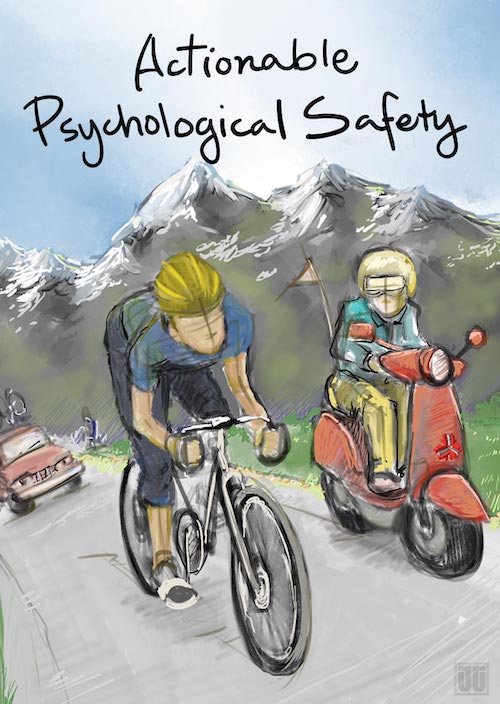I once thought of “Agile” as a noun, a family of software methods (also known as “lightweight methods” in the 1990s), all of which share principles defined in the Manifesto for Agile Software Development.
And that could have been the end of the story.
But my experiences led me to evolve my understanding of agility.
I spent more than two decades learning, implementing and helping thousands of others in the software field learn and implement agile methods.
That led me to work with all kinds of individuals, including executives, managers, HR (or people ops), support staff, sales, marketing, analysts, developers and testers.
I applied agility within Industrial Logic, and at home.
I observed agility in athletes and entrepreneurs.
Along the way, the software designer in me naturally looked for abstractions, unifying ideas that were true about agility in any context, not just software development.
Amplifying Your Agility
In 2011, I was asked to give a keynote presentation at an Agile conference.
A few years earlier, I’d gone to a wonderful conference named AYE (Amplify Your Effectiveness), hosted by the great Gerald M. Weinberg and friends.
AYE inspired me to name my new keynote speech, Amplify Your Agility.

During that talk, I used the Merriam-Webster definition of the adjective, agile, for the first time:
- Marked by a ready ability to move with quick easy grace.
- Having a quick, resourceful and adaptable character.
I could not get those wonderful words out of my head.
Quick. Easy. Grace.
Quick. Resourceful. Adaptable.
My mental model about agility was shifting.
I had begun my journey from noun to adjective.
The simple, precise definition of the adjective, agile, started to influence how I helped clients approach agility across all areas of the organization.
Methods and tools were still useful, of course. However, they were a means to an end, a way to help practice and live the adjective, agile.
When helping clients analyze what could be improved, I helped them consider their own challenges with quickness, ease, adaptability and resourcefulness.
The words in the definition of agile became the driver, instead of the methods.
The adjective, agile, now led the way, not the methods.
This was the shift from noun to adjective.
For me, it took years.
Around 2018, I decided to write an entire book about it, called Joy of Agility.
If you haven’t been on this journey from noun to adjective, I invite you to explore it.
I’m a far better agilist because of it.





